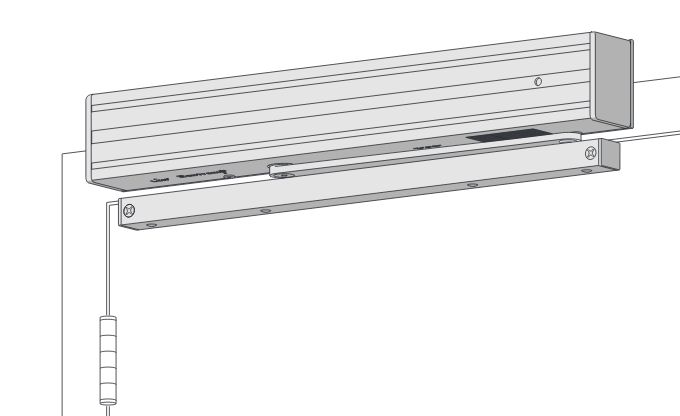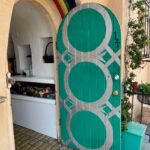First, a couple of notes…
- There were some questions about last week’s Fixed-it Friday post, so I added some more photos. Click here if you want to take a look.
- I’m making some changes to iDigHardware, but don’t panic! You will still be able to find everything you need. If you have any suggestions or comments about the layout of the site, feel free to leave a comment below.
Now, for today’s post:
I love a hardware challenge, and I’m lucky to be in a position where Google is helping people find me and iDigHardware. Sometimes the questions are stumpers and I post them here as WWYD posts to see if any of you have run into similar situations. I always appreciate your feedback!
Last week I received a really interesting question. The city of Sioux Falls, South Dakota, made a local code modification that requires certain stairwell doors to be automatic-closing:
3. Interior doors located in exit enclosures, smoke proof enclosures, and exit passageways in Group R and I-1 occupancies shall be automatic-closing fire door assemblies in accordance with NFPA 80 and controlled in accordance with NFPA 72..
An automatic-closing door is one that is held open until released during a fire. Although NFPA 80 defines an automatic-closing device as “a device that causes the door or window to close when activated by a fusible link or detector,” the IBC requires doors in many locations, including exit enclosures, to be automatic-closing upon smoke detection (not heat).
Why would the city want these doors to be automatic-closing, when typically self-closing doors are acceptable by code? Here is their commentary:
The Fire Prevention Division, upon inspections of multi-story residential occupancies, continually finds stair enclosure doors held open by wood wedges. This [code modification] proposes to require any door that serves as the last defense to prevent fire and/or smoke from entering into a vertical stair and smoke proof enclosures to be provided with an automatic door closing device that is either tied into a fire alarm or a smoke detector in the vicinity of the door. This provision will be applicable to stair enclosure doors in transient or non-transient residential occupancies and assisted living centers in new construction only.
Kudos to the city for trying to avoid residents using wood wedges to prop open stair enclosure doors for convenience, but what if the building owner doesn’t want to have the doors propped open? In many multi-family buildings, there are security measures that prevent someone from entering a tenant floor from the stairwell unless they are authorized to do so. Which product would meet the owner’s and occupants’ needs for code-compliance, convenience, and security?
 How about the LCN 4310HSA? This is an automatic-closing unit which closes the door when released by a smoke detector – as required by the code modification. A typical automatic-closing unit would hold the door open indefinitely (until smoke is detected), which would not provide the necessary security. But the HSA unit would work like this:
How about the LCN 4310HSA? This is an automatic-closing unit which closes the door when released by a smoke detector – as required by the code modification. A typical automatic-closing unit would hold the door open indefinitely (until smoke is detected), which would not provide the necessary security. But the HSA unit would work like this:
- If someone used the door without opening it past 80 degrees, the door would close immediately – like a self-closing door.
- If someone pushed the door past 80 degrees, the door would stay open, removing the temptation to install a wood wedge.
- After the person has gone through the door, the sensor on the HSA unit would sense that there is no further traffic and would release the door from hold-open, re-securing the opening.
The 4310HSA is mounted on the pull side of the door, so it would be on the stairwell side out of sight from the corridor. There is also a push-side unit – the 4410HSA. These units are often used for doors where large groups of people may exit together like a theater or auditorium, so the hold-open is more of a convenience, but I think this is another great application for the product.
What do you think?
You need to login or register to bookmark/favorite this content.





Plus maintenance nightmare
Plus people will block them open anyway
I concur. Perfect application.
I like the concept, but have a concern that people may still “wedge” the door open for air flow after they learn that it times out and closes. If the desire is to have the door held open, I lean toward whatever the new name and # is for the LCN Sentronic device that ties to the fire alarm system. They seem to be more durable than the wall or floor mounted mag hold opens. The last resort is a camera and a bouncer to “enforce” the no propping rule.
Since this is operating like a hold-open arm on a timer, it would perhaps be handy for it to have some signage indicating how long the timer is. Otherwise, if the door is being propped for things like someone moving into an apartment, they either find themselves locked out after hold-opening it, or they just think it is an unreliable hold-open and prop it with a wedge anyway.
Connect the door to a timer which is inturn controlled by another timer. When the door is opened this would “enable” another timer which would time the hold-back to release in xxx seconds. This would allow the guy propping the door to think its propped, then the door would release some time after the guy leaves.
I have also had success with door prop detection using LPS coupled with a magnetic switch (one that can be adjusted) and an alarm sounder. Put a big sign on the door to warn potential proppers not to hold the door open longer than xxx seconds. You can even add voice if you like.
The code modification should have read “…. occupancies shall be self closing or automatic-closing fire door assemblies in accordance with …”, thus where security is the concern a self closing device is used, and where security is not prime auto closing can be applied.
I dont think 4310HSA is ideal in this application because, as RB says above, it can be thought as an unreliable holder and people will still wedge.
4310HSA is ideal only for doors where large groups of people may exit together like a theater or auditorium.
Hi Khozema –
The code change specifically requires an automatic-closing door, not a self-closing door. What type of automatic-closing application would you use?
– Lori
Why not an Electro Magnetic Hold Open device, which only holds open if the door contact the magnet, and will release with smoke detection.
Hi Leo –
The building owner doesn’t want the door held open because of security. Imagine a card reader on the stair side and only the tenants who live on that floor are authorized to enter. The regular automatic-closing device (like a magnetic holder) required by the code modification would defeat the purpose of having access control.
– Lori
So who will hold it open with the wedge? The wedge also defeats the purpose of access control.
You can hook up the hold open device to a keypad next to it (or even tied up to a network controlled system for remote setting) that should act like a switch to disconnect the power to the magnet, so you should be able to turn it on and off.
It is interesting. What I see more often than not is an uneducated public. This is probably the best solution per the given application, however unless the general public knows that this will hold the door open if pushed past the certain degree point they may never use it. Once they do understand this and they then become educated the door will close after a period of time they will then resort back to the “wedge” concept – which really brings you back to square one. Hardware – it’s never easy!
What if you utilized magnetic hold opens with a timer – most residents (and even the building owner) may want re-entry from 7 am – 7 pm, but in the evening hours want to ensure more security. In the event of smoke during this time frame these still release upon fire alarm. But alas – you then may find yourself dealing with handrails that don’t allow the door to open just enough for the magnet to get close enough to the armature!
Cannot have the cake and eat it too.
I dont think of a solution where both can be achieved – automatic closing and security at all times.
Auto operator may be an option where acceptable by AHJ.
I found it interesting how you mentioned how some doors can close automatically when triggered by a smoke detector to prevent the spread of fire. My wife and I are considering purchasing commercial property and starting a business and we want to make sure we are all up to code on fire standards. I will be sure to keep this in mind as we assess our options and search for automatic doors!
I read your article . it is very useful for me.
thank your for meanful content.